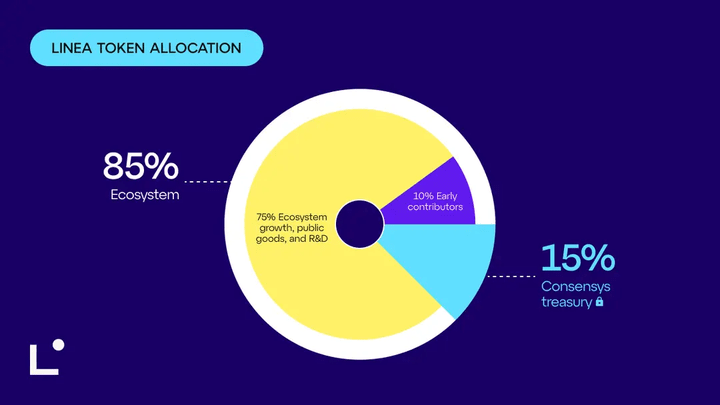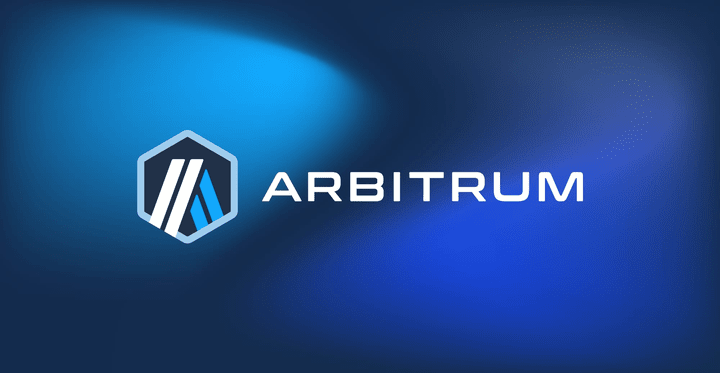Dear friends, Ethereum's Layer 2 expansion Linea has finally officially announced its token issuance. Is this thing worth investing in? What tricks are there in the token economics? What advantages does it have over old rivals ARB and OP? How high can the price soar after launch? Today, I will take everyone through an in-depth analysis filled with hard facts. Don't just watch the excitement; we need to look at the details—based on official Linea data and industry benchmarks, I will speak with data and provide some personal predictions at the end.
1. Token economics: simple and crude, but with hidden mysteries
The total supply of Linea's token LINEA is as high as 72 billion. The team plans to airdrop 9% to users. But the most crucial part is its economic model—designed quite intelligently, but not as simple as it seems. Let me clarify for you:
No practical use? That's right! The LINEA token is neither fuel (which is still ETH) nor a governance token (cannot vote, etc.), and at first glance, it looks like an 'air coin'.
Core mechanism: repurchase and burn
After deducting costs from the transaction fees (collected in ETH) of the Linea system, it is divided into two parts:20% is burned for ETH deflation (this operation is beneficial for Ethereum and indirectly supports ETH).
80% is used to repurchase and burn LINEA tokens (equivalent to the bulk of the system's profits being given to token holders).
In simple terms, this is like a company's 'stocks'—you have no voting rights, but when the company makes money, you directly receive dividends (through burning to reduce supply and push up token price). Compared to those that only focus on governance and have no economic empowerment (like the pure governance model of ARB and OP), LINEA has a clear advantage: it allows holders to benefit in real monetary terms, not just empty promises.
Key point: This mechanism is good, but it relies on system profitability. If the Linea ecosystem does not improve, with low fees, the repurchase power will be weak, and token empowerment will be discounted.

2. Role of tokens: pure 'stockization', value depends entirely on ecological support
Since there is no governance or fuel function, LINEA's role can be summarized in one word: value appreciation for holders. How does it appreciate? It all depends on the repurchase and burn:
The more ETH the system earns, the stronger the repurchase, the scarcer the tokens, and the greater the price potential.
Where is the risk? If the ecosystem collapses, with low fees, the repurchase will become mere talk.
In comparison, ARB and OP's governance tokens allow users to vote to influence the protocol, but they do not provide economic benefits (system profits are not distributed), which is equivalent to 'working without pay'. Linea's design is a breath of fresh air in the industry—it directly links benefits to token holders, making it more 'shareholder-friendly' than ARB/OP. However, advantages are advantages; how much the price can rise still depends on the project's capabilities, which I will discuss in detail below.

3. Compared to ARB and OP: clear advantages, but don't be overly optimistic
The ace that Linea plays is economic empowerment, which is indeed stronger than ARB and OP. But brothers, we need to compare rationally and not be fooled by marketing:
Current status of ARB and OP:
Arbitrum (ARB): Fully diluted market cap (FDV) is about 4.2 billion, and ecological TVS (total locked value) is as high as 17.6 billion.
Optimism (OP): FDV is about 3.1 billion, TVS is about 3.7 billion.
Both of these are established Layer 2s with mature ecosystems, but their tokens only have governance functions and no economic distribution—holders cannot earn system profits.
Advantages of Linea:
Direct economic empowerment: 80% of fees used to repurchase tokens, holders earn value appreciation dividends passively.
But the shortcomings are more painful: the ecological TVS is only 514 million, far lower than ARB's 17.6 billion and OP's 3.7 billion. The user and capital volume is too small, and profitability may be insufficient.
There are advantages, but the current ecological scale is too different; relying solely on the economic model may not be enough to reverse the situation. It's like a small company with a great dividend policy; without income, it's all in vain. My view: this advantage can add points, but the initial impact on token price will be limited; don't expect an overnight surge.

4. Estimated launch price
This is what fans are most concerned about—how much will LINEA be worth after it goes live?
Benchmark comparison:
If we benchmark against ARB/OP's FDV (4.2 billion and 3.1 billion), the LINEA token price could reach 0.043-0.058 USD (with a total supply of 72 billion).
However, Linea's TVS is only 514 million, which is closer to Starknet (TVS 518 million, FDV 1.3 billion), so a reasonable FDV is about 1.3 billion.
Calculating:
Reasonable token price = 1.3 billion / 72 billion ≈ 0.018 USD Upper limit token price = 4.2 billion / 72 billion ≈ 0.058 USD
My prediction:
The price after launch is likely around 0.018 USD, at most reaching 0.058 USD (if the market FOMO). Exceeding 0.058 USD? That would be a bubble, too much speculation, be careful of getting trapped!
Currently, Linea's ecological construction is indeed too poor—after operating for so long, the TVS is only over 500 million, far worse than the rising star Base (they are already playing AI + Crypto). Economic empowerment is a highlight, but without ecological support, it's just empty talk.
Summary
Lastly, I want to share some personal opinions. The issuance of tokens by Linea has come late (it's been delayed for nearly two years), and the team has only recently made it tangible after just painting a picture on social media. The token economics design is good, more 'shareholder-oriented' than ARB/OP, but the project's progress is painfully slow—the transition from testnet to mainnet has dragged on too long, and there are no blockbuster applications in the ecosystem, just boasting about ZK progress (what specific benefits? Can't see!).
Brothers, making money in the crypto world relies on understanding—data, mechanisms, and ecosystems must be looked at holistically. Linea has potential, but we need to wait for the ecosystem to grow. For now, let's observe; if we really want to invest, remember: buy low and sell high, don’t be a cutting leek!